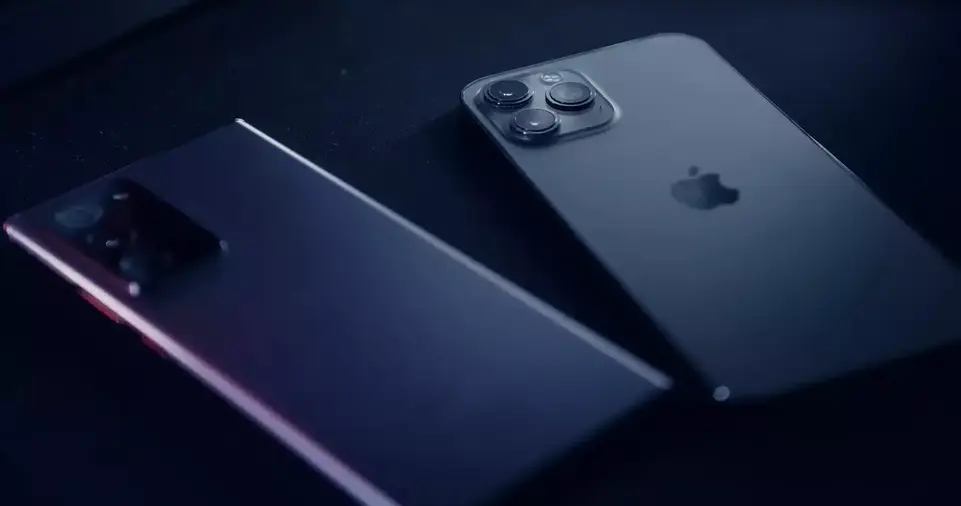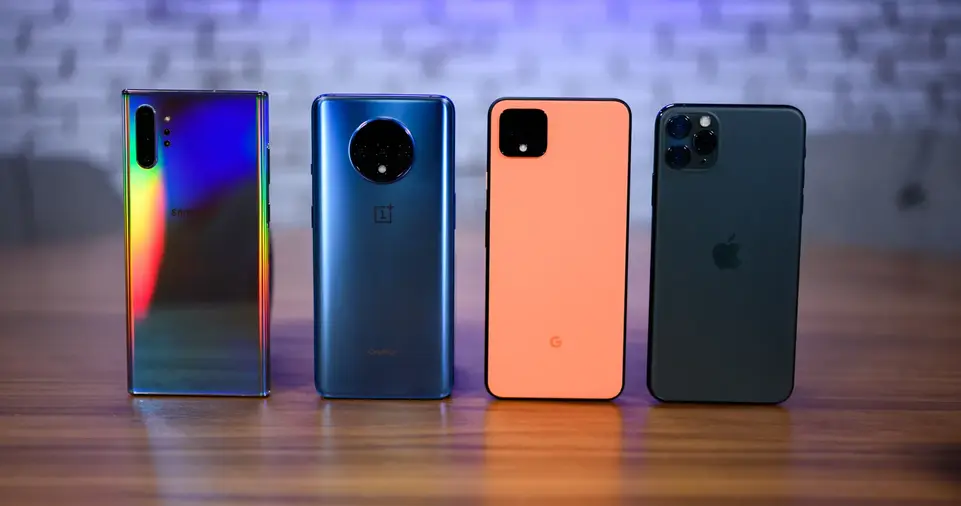Choosing the best smartphone for your needs can be a daunting task. With countless models, brands, and features available, finding the right device that aligns with your requirements and budget is essential.
Smartphones have become an integral part of daily life, serving as tools for communication, productivity, entertainment, and more.
Whether you’re upgrading from an older model, buying your first smartphone, or switching brands, the decision involves various factors.
From operating systems and performance capabilities to camera quality and storage options, the market is flooded with choices.
The right smartphone can elevate your daily life, making tasks more efficient, keeping you connected, and even supporting your hobbies and interests.
However, the sheer volume of options can make the selection process overwhelming. By breaking down the key aspects to consider, this guide will help you navigate the options and pinpoint the device that suits your lifestyle and preferences.
Whether you’re a tech-savvy individual seeking advanced features or someone looking for a simple, user-friendly device, this article will cover every aspect of smartphone selection to empower you with the knowledge to make an informed purchase.
Guide to Choose the Best Smartphone for Your Needs

Determine Your Budget
One of the first steps in choosing the right smartphone is setting a budget. Smartphones come in a wide range of prices, and understanding what you’re willing to spend can help narrow down your options.
Here’s a breakdown of the major price categories:
Budget Smartphones (Under $300)
Budget smartphones are perfect for users who require essential functionality without spending too much.
These phones typically offer:
- Decent performance for everyday tasks such as calling, texting, and browsing.
- Basic cameras for casual photography.
- Limited but adequate storage and RAM for standard apps.
Mid-Range Smartphones ($300–$700)
Mid-range devices strike a balance between price and performance. They are suitable for users looking for a better experience without splurging.
Features often include:
- Higher resolution displays with better color accuracy.
- Improved cameras with multiple lenses and AI enhancements.
- Faster processors for smooth multitasking and gaming.
Flagship Smartphones ($700+)
For those who demand the best in technology, flagship phones are the top-tier option.
These premium devices come with:
- Cutting-edge processors for exceptional performance.
- Stunning displays with high refresh rates and HDR support.
- Advanced camera systems capable of professional-grade photography and video recording.
By determining your budget upfront, you can save time and focus on options that fit within your financial range.
Budget-conscious buyers can still enjoy great functionality, while those willing to invest more can access top-notch technology and features.
Remember that financing options and trade-in programs may also make higher-end devices more accessible.
Operating System: Android or iOS?
The operating system (OS) is a fundamental choice when selecting a smartphone.
Your preference for iOS or Android can significantly impact your overall user experience.
Android: Flexibility and Variety
Android, developed by Google, powers a wide range of devices from manufacturers like Samsung, Google, Xiaomi, and OnePlus.
Key benefits include:
- Customization: Android allows extensive customization of home screens, widgets, and app layouts.
- Device Variety: You can choose from an array of models at different price points.
- Expandable Storage: Many Android phones support microSD cards for extra storage.
iOS: Seamlessness and Simplicity
Apple’s iOS, exclusive to iPhones, offers a user-friendly and polished experience.
Key features include:
- Ecosystem Integration: iPhones work seamlessly with other Apple products like Macs, iPads, and Apple Watches.
- Software Support: Apple provides long-term software updates, ensuring security and new features for older models.
- User-Friendly Interface: The intuitive design makes it easy for first-time users to navigate.
Choosing between Android and iOS depends on your preferences for customization, brand loyalty, and compatibility with other devices.
If you value flexibility and choice, Android may be ideal. On the other hand, iOS is perfect for users seeking a seamless and integrated experience.
Display Quality
The display is one of the most noticeable aspects of a smartphone. It affects how you view photos, videos, and apps, so it’s crucial to select a device with a screen that meets your needs.
Screen Size
- Small Displays (Under 6 Inches): Ideal for one-handed use and portability.
- Medium Displays (6–6.5 Inches): Perfect for a balance between usability and media consumption.
- Large Displays (Over 6.5 Inches): Best for gaming, streaming, and multitasking.
Screen Resolution
Resolution determines the sharpness of the display.
Common options include:
- HD (720p): Suitable for budget phones.
- Full HD (1080p): Offers crisp visuals and is a standard for mid-range devices.
- Quad HD (1440p) and 4K: Found in flagship phones, providing incredibly detailed visuals.
Display Technology
- LCD: Affordable and energy-efficient but lacks vibrant colors.
- OLED/AMOLED: Delivers deep blacks, high contrast, and vivid colors, ideal for high-quality displays.
- Refresh Rate: Higher refresh rates (90Hz, 120Hz) make scrolling and gaming smoother.
A good display enhances your overall experience, especially for watching videos, gaming, or reading. Consider your typical usage patterns to decide what screen size, resolution, and technology suit you best.
Performance and Processor
The performance of a smartphone determines how efficiently it handles tasks, apps, and games.
Key components to consider include the processor and RAM.
Processor (Chipset)
- Qualcomm Snapdragon: Known for reliability and performance, especially in flagship models.
- Apple A-Series: Exclusive to iPhones, these chips are industry leaders in speed and efficiency.
- MediaTek Dimensity: Affordable yet powerful, commonly found in budget and mid-range phones.
RAM
- 4GB: Sufficient for basic tasks and light app usage.
- 6GB–8GB: Ideal for moderate multitasking and gaming.
- 12GB or More: Found in high-end devices for demanding applications.
Investing in a device with a powerful processor and sufficient RAM ensures smooth performance and longevity.
Be mindful of your usage patterns to decide how much processing power you actually need.
Camera Quality
Smartphone cameras have become a significant selling point, with many users prioritizing photography capabilities.
Here’s what to look for:
Megapixels and Lenses
- Megapixels: While higher megapixels offer better detail, factors like sensor size and image processing also matter.
- Multiple Lenses: Ultrawide, telephoto, and macro lenses add versatility to your photography.
Features
- Night Mode: Captures clear photos in low-light conditions.
- Image Stabilization: Reduces blurriness in videos and photos.
- AI Enhancements: Automatically adjusts settings for optimal shots.
Choosing the right camera ensures you capture memorable moments with clarity and creativity. Take time to explore camera reviews and sample shots before finalizing your choice.
Battery Life
A phone’s battery life is crucial, especially if you rely heavily on your device throughout the day.
Key factors include:
Battery Capacity
- 3,000–4,000mAh: Suitable for light usage.
- 4,500mAh or More: Ideal for heavy users and gamers.
Charging Options
- Fast Charging: Speeds up recharge time.
- Wireless Charging: Convenient for those who prefer cable-free options.
Extended battery life is essential for uninterrupted usage, making it a vital consideration. Keep in mind that battery optimization features can also extend usage time.
Storage Options
Storage affects how much data, apps, and media your phone can hold.
Consider:
- Internal Storage: 64GB for basic use; 128GB–256GB for power users.
- Expandable Storage: MicroSD card support is a bonus for Android users.
Adequate storage ensures you can keep all your files and apps without constant management. Cloud storage options can complement internal storage, offering flexibility.
Build Quality and Design
Smartphone designs range from sleek and premium to rugged and practical.
Look for:
- Materials: Glass, metal, or plastic.
- Water Resistance: IP ratings indicate protection against water and dust.
Choosing a phone with a durable build and appealing design ensures satisfaction with its aesthetics and longevity. Consider the trade-offs between style and functionality based on your daily use.
Connectivity and Features
- 5G Support: Future-proofs your phone for faster networks.
- Headphone Jack: Essential for wired audio enthusiasts.
- Dual SIM Support: Convenient for managing multiple phone numbers.
Software Updates and Security
Choose brands with a strong track record of providing regular updates to keep your phone secure and feature-rich.
Regular updates ensure optimal performance and protect against vulnerabilities. Prioritize manufacturers known for consistent software support to extend your device’s lifespan.
ALSO READ:
Last Words!
By assessing these factors, you’ll find a smartphone tailored to your needs, ensuring satisfaction and value for your investment.
Choosing wisely can transform your daily interactions with technology, offering convenience, productivity, and enjoyment in every use.

